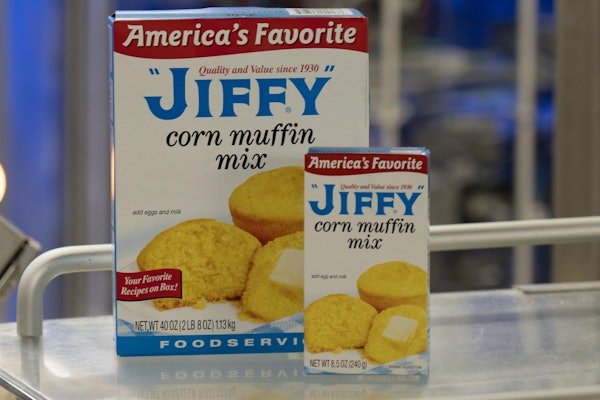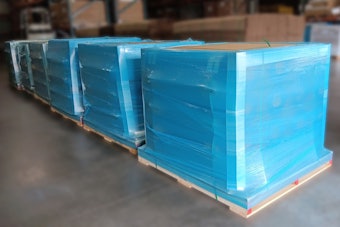
Compostable packaging is no longer a futuristic promise. It is becoming a practical part of the materials landscape as brands seek to reduce waste and rethink product lifecycles. Yet for all its potential, compostable packaging still faces complex hurdles—from scaling production and securing reliable infrastructure to navigating policy uncertainty and public skepticism.
 Leah Ford, global marketing, communications, and sustainability leader for CJ BiomaterialsCJ Biomaterials
Leah Ford, global marketing, communications, and sustainability leader for CJ BiomaterialsCJ Biomaterials
Biopolymers such as polylactic acid (PLA), polybutylene succinate (PBS), and polyhydroxyalkanoates (PHA) offer different sustainability and performance profiles, but each is subject to the same fundamental challenge: how to compete with decades of entrenched plastics manufacturing.
As Leah Ford, global marketing, communications, and sustainability leader for CJ Biomaterials, explains, “The million-dollar question across a lot of biopolymers is how do you reach the level of scale and optimized economics that is found in incumbent polymers like polypropylene.”
Sustainability alone, she says, will not drive success. Compostable materials must prove they can perform at commercial speeds, survive distribution, and meet customer expectations. “There’s a lot more to scalability than just trying to get people to buy something that’s more sustainable,” she explains.
Policy pressure and the California question
The policy landscape adds another layer of complexity. California’s Assembly Bill 1201 (AB 1201), which ties the right to use the word “compostable” to products approved as organic inputs under the U.S. Department of Agriculture’s National Organic Program, has become a flashpoint.
“The definition of compost has not been updated in 30 years,” Ford notes. “A lot of the standards were set long before compostable products hit the market.”
Originally slated to take effect on January 1, 2026, the law’s compliance deadline has been extended to June 30, 2027 to allow time for coordination among CalRecycle, the USDA, and certification bodies such as the Biodegradable Products Institute (BPI). Without federal updates, many compostable plastics could lose labeling rights in California, forcing companies to repackage materials or risk consumer confusion.
“That could lead to a situation where we would have to supply packaging that says something like ‘compostable except in California,’” Ford says. Through BPI and related coalitions, CJ Biomaterials and other stakeholders are working to align definitions so compostable packaging can continue to play a role in food waste diversion programs.
Market confidence and the Danimer shock
The bankruptcy of Danimer Scientific, a long-time PHA manufacturer, unsettled the market and raised questions about the resilience of compostable materials. “It’s not great when a company that’s been on the market for 20 years goes under,” Ford acknowledges. Still, she views it as part of the learning curve for a young industry.
 A compostable frozen-food pouch made with PHA resin demonstrates the material’s suitability for multilayer film applications, offering the strength and durability required for cold-chain packaging while remaining fully compostable.CJ Biomaterials
A compostable frozen-food pouch made with PHA resin demonstrates the material’s suitability for multilayer film applications, offering the strength and durability required for cold-chain packaging while remaining fully compostable.CJ Biomaterials
Ford emphasizes that PHA is not dependent on a single producer. “There are a number of companies now that can supply PHA,” she says. “That’s an important shift from just a few years ago. We’re moving toward a more stable supply base, which helps brand owners feel confident about adopting the material.”
“No large brand owner adopts a program without having multiple suppliers,” she adds. “We want to be able to demonstrate that resiliency.” The lesson, Ford says, is that long-term stability depends on economic discipline, reliable performance, and transparent sustainability data. “There’s not a lot of room to make mistakes in the biopolymers market.”
Certification and trust
One of the biggest perception challenges for compostable materials is that many people underestimate how strict the certification standards actually are. The process to verify compostability involves multiple levels of testing and oversight, far beyond a simple label claim.
“The ASTM standards we use to certify compostable materials were developed to model real-world composting conditions,” Ford says. She points to Closed Loop Partners’ field test of more than 20,000 products. “Without exception everything was breaking down as expected,” she says. “The bioplastics actually composted even slightly better than the fiber-based products.”
Certification combines disintegration, biodegradation, and eco-toxicity testing, often under both industrial and home composting conditions. “It’s a really high bar to be able to even just claim compostability,” Ford says. “And it should be that way because if these products don’t deliver, they lose credibility fast.”
Where PHA fits
Within the wider biopolymer landscape, PHA has emerged as a promising material family for compostable packaging. Unlike many bioplastics, PHA is a naturally occurring polymer produced through microbial fermentation. The microbes consume sugar and other nutrients and create PHA inside their cells, forming a biopolymer that can later be processed into films, fibers, or molded goods.
CJ Biomaterials entered the field in 2016 after acquiring the Metabolix technology. Its strength lies in industrial fermentation expertise developed across the broader CJ Group. Ford says the company’s goal is to “produce high-quality, economically incentivized PHA” at scale while helping converters and brand owners apply it successfully.
CJ Biomaterials supports that effort through its Center of Excellence in Woburn, Mass., where customers can test processing and certification requirements. The company has launched marine-biodegradable PHA straws with Tous les Jours, a bakery chain owned by CJ Group, and is collaborating on compostable multilayer pouches for frozen foods.
Its newest innovation, an amorphous PHA, serves as a compostable impact modifier for rigid packaging, improving clarity and toughness while maintaining compostability. “You can exceed the impact strength of acrylic modifiers and still meet certification standards,” Ford explains.
Reframing the conversation
Ford believes compostable materials companies must shift the discussion beyond novelty and clarify that PHA is the only biopolymer family known to be truly marine degradable. That characteristic could make it an important part of addressing plastic pollution in waterways and oceans.
 Compostable thermoformed containers made with PHA offer a clear, durable alternative to traditional plastics, ideal for fresh foods, deli items, and ready-to-eat meals.CJ Biomaterials
Compostable thermoformed containers made with PHA offer a clear, durable alternative to traditional plastics, ideal for fresh foods, deli items, and ready-to-eat meals.CJ Biomaterials
She also stresses that the issue of microplastics is not limited to littering but to the persistence of tiny plastic fragments that remain in the environment for centuries. “We know that polypropylene in fragment form is going to be around for millions of years,” she says. “Realizing how much control we don’t have over how materials enter the environment is going to push us even harder to look at inherently biodegradable materials like PHA.”
Ford also sees potential in combining reuse and compostability. “PHA can make a beautiful injection-molded reusable cup,” she says. “You can reuse it half a dozen times and then send it to compost.”
The key, she adds, is credibility. “If we are greenwashing or these products don’t deliver, regulators will move quickly to restrict them.”
Education for lawmakers, composters, and consumers on what certification entails—and why performance data matter—is essential to long-term acceptance. PW
























